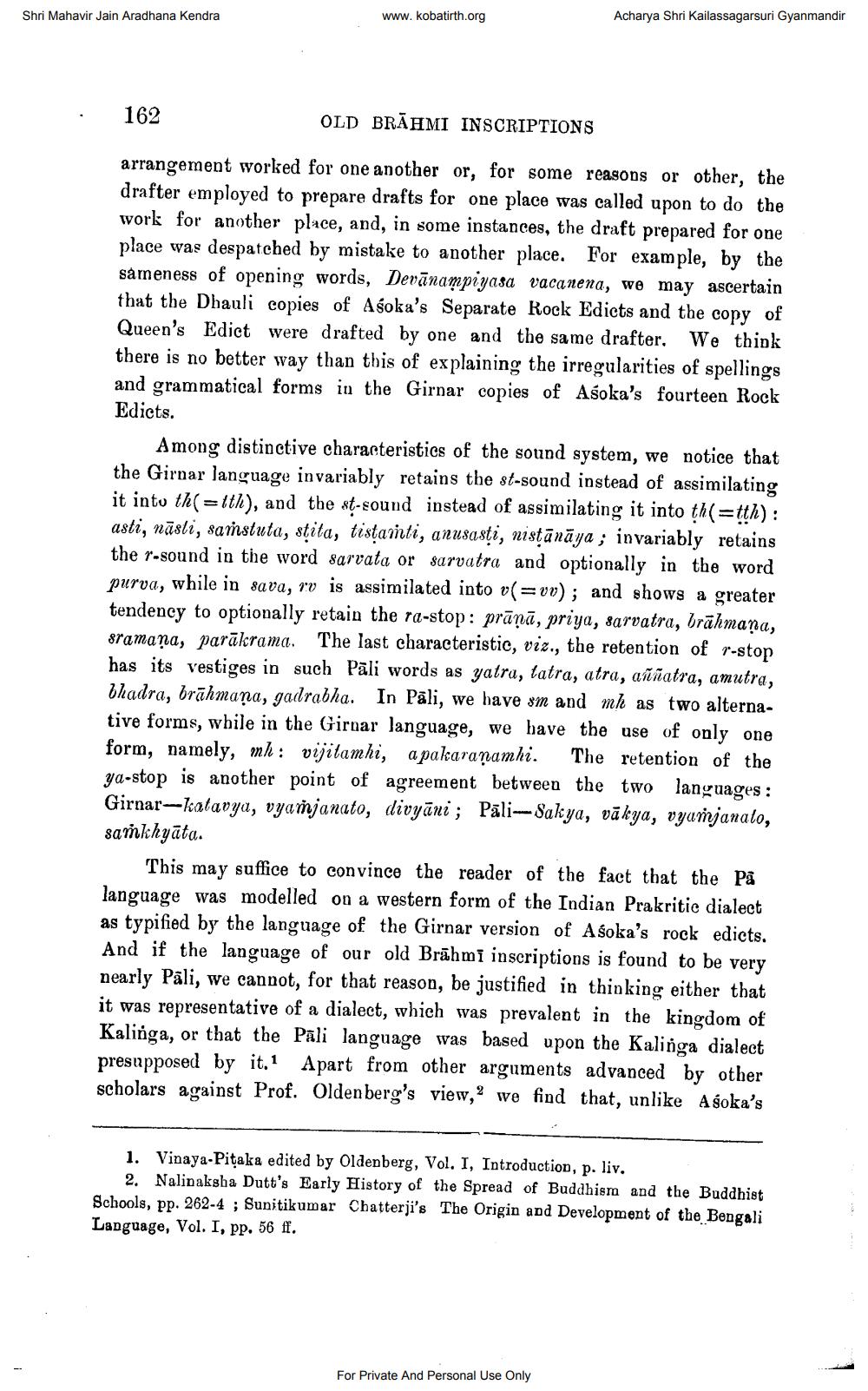________________
www.kobatirth.org
Shri Mahavir Jain Aradhana Kendra
Acharya Shri Kailassagarsuri Gyanmandir
162
OLD BRAHMI INSCRIPTIONS
arrangement worked for one another or, for some reasons or other, the drafter employed to prepare drafts for one place was called upon to do the work for another place, and, in some instances, the draft prepared for one place was despatched by mistake to another place. For example, by the sareness of opening words, Devānampiyasa vacanena, we may ascertain that the Dhauli copies of Asoka's Separate Rock Edicts and the copy of Queen's Edict were drafted by one and the same drafter. We think there is no better way than this of explaining the irregularities of spellings and grammatical forms in the Girnar copies of Asoka's fourteen Rock Edicts.
Among distinctive characteristics of the sound system, we notice that the Girnar language invariably retains the st-sound instead of assimilating it into th(=ith), and the st-sound instead of assimilating it into th(=tth): asti, nāsli, samstuta, stita, tistamti, anusasti, nistānāya ; invariably retains the r-sound in the word sarvata or sarvatra and optionally in the word purva, while in sava, rv is assimilated into v(=vv); and shows a greater tendency to optionally retain the ra-stop: prānā, priya, sarvatra, brāhmana, sramaņa, parākrama. The last characteristic, viz., the retention of r-stop has its vestiges in such Pāli words as yatra, tatra, atra, aññatra, amutra, bhadra, brāhmaṇa, gadrabha. In Pāli, we have sm and mh as two alternative forms, while in the Girnar language, we have the use of only one form, namely, mh: vijitamhi, a pakaraṇamhi. The retention of the ya-stop is another point of agreement between the two languages : Girnar-katanya, vyamjanato, divyāni; Pāli-Sakya, vākya, vyamjanalo, samkhyāta.
This may suffice to convince the reader of the fact that the På language was modelled on a western form of the Indian Prakritic dialect as typified by the language of the Girnar version of Asoka's rock edicts. And if the language of our old Brāhmi inscriptions is found to be very nearly Pāli, we cannot, for that reason, be justified in thinking either that it was representative of a dialect, which was prevalent in the kingdom of Kalinga, or that the Pāli language was based upon the Kalinga dialect presupposed by it.1 Apart from other arguments advanced by other scholars against Prof. Oldenberg's view, we find that, unlike Asoka's
1. Vinaya-Pitaka edited by Oldenberg, Vol. I, Introduction, p. liv.
2. Nalinaksha Dutt's Early History of the Spread of Buddhism and the Buddhist Schools, pp. 262-4 ; Sunitikumar Chatterji's The Origin and Development of the Bengali Language, Vol. I, pp. 56 ff.
For Private And Personal Use Only




